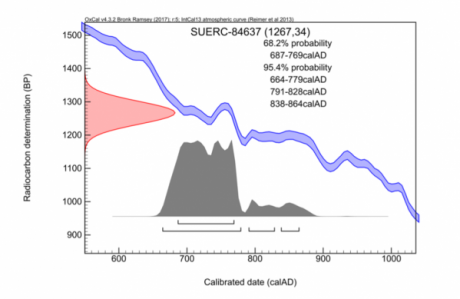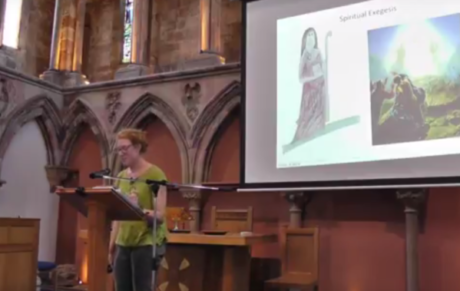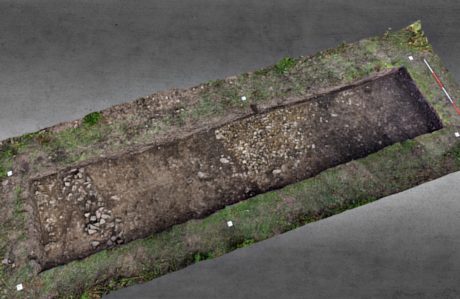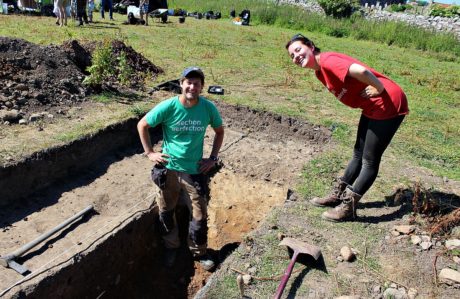
Born a pagan princess in Northumbria, exiled as a child, and raised by the Christian kings of Dal Riada, Aebbe’s story is a fascinating one. But after two weeks digging in search of the missing monastery she founded at Coldingham, the big question is… have we found it?
We’ve spent the last two weeks in the Scottish Borders, looking for a monastery founded by Princess Aebbe in the 7th century, around the year AD 640. Now lost to time, historical tradition claims that the monastery was most likely somewhere up on St Abbs Head, where a late rmedieval cult developed around her memory in the 12th century. But strangely, archaeological investigation has found not a single trace of a building here.
It’s entirely possible that history has been misled, for if you wanted to establish a monastery that would convert a pagan population to Christianity (just as Aebbe did), would you really place yourself in such a hard-to-reach cliff-top location? And anyway, just a wee bit inland, right in the heart of Coldingham, there is a later medieval priory. And that’s important because there is a well-known tradition of priories being built on the sites of earlier monasteries…
Adding weight to this possibility is the fact that over the years, hints of Aebbe’s early Anglo-Saxon monastery have appeared in the abutting gardens – from fragments of stone carvings, to early bone combs. Plus, the geophysics interpretation looks pretty busy!
With all this in mind, we went to look for traces in the fields surrounding the priory. Over the course of our two weeks, we became increasingly fascinated by a large, curving ditch that appeared in Trench 6. Excitingly, this ditch seems to curve gently round to where, during an earlier rescue excavation, material was found in a similar ditch that was radiocarbon dated to the 7th century – the exact same period as Aebbe’s monastery.
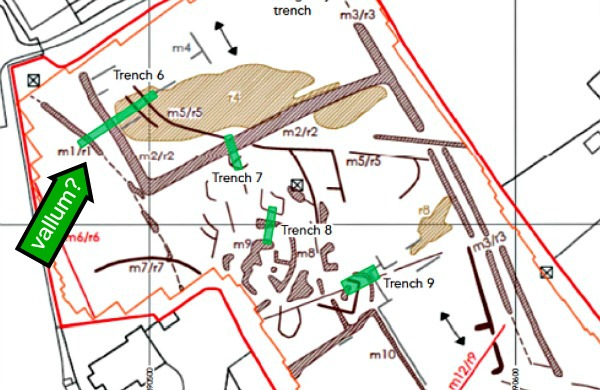 Even more excitingly, if you project the course of the ditch, it looks like a huge circle, centred on the upstanding priory. If the later priory was built on top of the earlier monastery, could this ditch be the monastery’s vallum?
Even more excitingly, if you project the course of the ditch, it looks like a huge circle, centred on the upstanding priory. If the later priory was built on top of the earlier monastery, could this ditch be the monastery’s vallum?
A vallum is an enclosing ditch that would have surrounded the monastery’s main precinct. They were more symbolic than defensive – a simple marker to delineate the monastery’s perimeter. And that certainly seems to fit with what we’ve found. This really could be Aebbe’s vallum!
On the last day of the dig, we took samples of charcoal, animal bone and soil from the bottom of the ditch to explore in the lab. If this material dates back to the 7th century, it would make a strong case that this is the boundary ditch (vallum) of Princess/Saint Aebbe’s Monastery.
For now it’s the end of the dig, but the archaeology isn’t over yet! If the results come back positive, then we’ll certainly be looking to continue our explorations again next year, to see if we can pin down any more evidence of Aebbe’s monastery.
Let’s hope we can crowdfund another dig, so that we can come back and excavate more next year!
